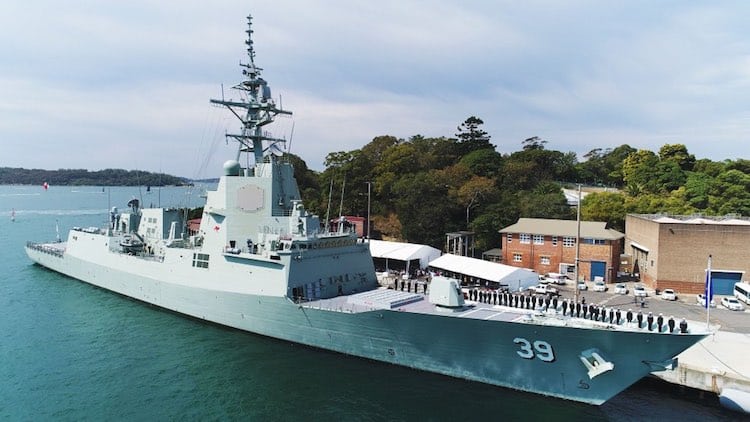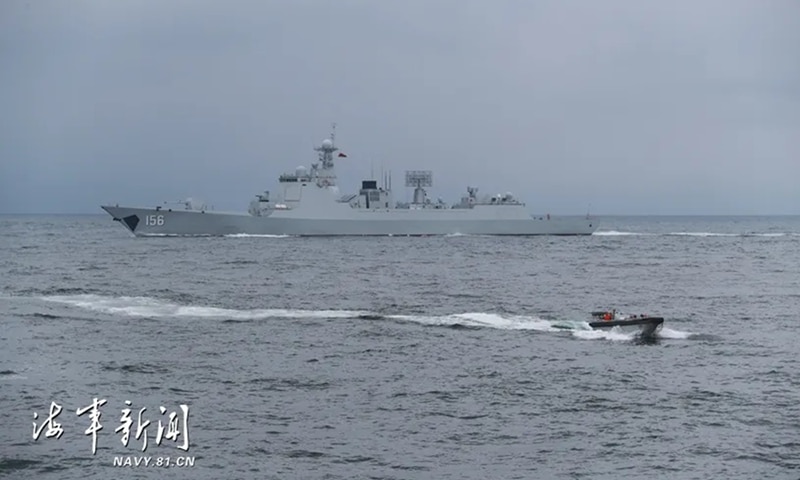Heirs to the destroyers that appeared at the end of the 19ᵉ century to fight against the torpedo boats that threatened large ships of the line such as cruisers and later battleships, modern destroyers are imposing surface combat ships, often more than 7000 tons, equipped with powerful armament, great versatility, and capable of escorting major units such as aircraft carriers as well as carrying out land strikes or interdiction missions
If the classification remains vague and unsystematic, with on the one hand theLighter and more specialized frigates, and on the other hand the heavier cruisers capable of playing the role of a major naval unit themselves, destroyers frequently represent the most powerful surface units in service in many leading navies, and are most often specialized in anti-aircraft, anti-missile and even access denial defense.
This two-part summary presents the 8 main classes of Destroyers in service or soon in service in the world's major navies, to assess their performance, military potential and the role that these ships can play in a changing global geopolitics.
Hobart-class destroyers (Australia, 3 units)
Intended to replace Adelaide class frigates, the three Hobart-class destroyers are simultaneously derived from the Spanish heavy frigates of the Alvaro de Bazan class and the American Arleigh Burke destroyers, from which they take over, like many Western destroyers presented here, the famous AEGIS system anti-aircraft and anti-missile defense.
The awarding of the SEA 4000 contract, in 2007, to the Spanish Navantia associated with the British BAe, was made jointly with the order of 2 assault helicopter carriers or Landing Helicopter Dock (LHD) of 27.500 tons of the class Canberra, also ordered from Navantia, of which they were partly to provide protection. Almost 75% larger than the Adelaide frigates they replace, the Hobart-class destroyers are 147m long with a loaded tonnage of 7.000 tons.
They are powered by a CODOG (Combined Diesel or Gas) system, employing two 2 hp diesel engines for transit at normal speed, and two General Electric Gas turbines of 7.500 hp each for high speed, giving them a maximum speed of 23.500 knots and an autonomy at sea of 28 nautical miles at 5.000 knots.

The Hobart armament offers a wide range of capabilities, with a predisposition for anti-aircraft defense thanks to its 48 vertical silos Mk41 welcoming SM2 missiles ou RIM-166ESSM, the latter being potentially loaded with 4 missiles per silo, offering great firepower in this area to the Australian destroyer. It also carries a 45 mm Mk127 gun, 2×4 Harpoon anti-ship missiles, a CIWS Phalanx close protection system, two teleoperated 25 mm M242 Bushmaster cannons and 2 twin torpedo tubes for anti-submarine torpedoes lightweight Mu90. An MH-60R Romeo helicopter completes the offensive panoply of the building.
The detection is entrusted with flat face radar AN / SPY-1D identical to that which equips the American destroyers of the Arleigh Burke flight I, II and IIa class, supplemented by a Vampir infrared electro-optical system from French SAGEM. For anti-submarine detection, it carries a hull sonar coupled with a towed sonar, giving it advanced capabilities, including in oceanic areas.
Although the construction of the first unit of the class, HMAS Hobart, began in 2009, it did not enter service until 2017, almost two years behind the initial schedule. The program was therefore rejected by the ANAO in 2014, the Australian equivalent of the Court of Auditors, for these issues of deadlines and cost overruns which will ultimately amount to more than $1,45 billion. Australians, i.e. nearly €300m per vessel.
The other two units of the class, HMAS Brisbane and HMAS Sidney, entered service in 2018 and 2020 respectively, and now operate alongside the Anzac-class frigates in the Royal Australian Navy.
Type 052D/DL destroyers (China, 25 units launched)
Derived from the Type 052C destroyers that entered service between 2004 and 2015 (6 units), and of which they are an enlarged and significantly modernized version, the Chinese Type 052D destroyers today represent the backbone of the escort of the major naval units of the Chinese navy, such as the Type 001/A aircraft carriers, the Type 071 assault ships or the Type 075 LHDs, particularly with regard to anti-aircraft and anti-missile defence.
It is also the most prolific class at the moment, with at least 25 units planned, including nine in an elongated version designated Type 052DL, but which will most certainly include many more ships.
Together with the Type 056A anti-submarine warfare corvettes, the Type 054A anti-submarine warfare frigates, and the Type 055 heavy destroyers, or cruisers, the Type 052D destroyers represent the revival of the Chinese surface navy, with capabilities that hardly have to envy their Western or Russian counterparts.

161 meters long for the DL version (157 m for the D version), the destroyer reaches an estimated tonnage of 7500 tons loaded. Contrary to Type 052C, it has a CODOG propulsion of Chinese invoice, and not German under licence.

The rest of this article is for subscribers only
The Classic subscriptions provide access to
all articles without advertising, starting at € 1,99.
Newsletter subscription
Register for the Meta-Defense Newsletter to receive the
latest fashion articles daily or weekly


[…] Since then, the profile of these naval forces has changed profoundly, with the entry into service of large destroyers such as the ships of the Sejong the Great class, among the largest (10.600 tons in load) and the best armed (128 silos vertical) of the […]
[…] article follows the article “Hobart, Type 52D, Sejong le Grand: modern destroyers – Part 1” published on May 24, 2021, which presented the Hobart (Australia), Type 052D/DL (China) classes, […]
[…] the entry into service in 2008 of the first of the 3 South Korean heavy destroyers of the Sejong le Grand class and its 128 vertical silos for a displacement of 10.000 tons and 166 meters long. It will be necessary […]